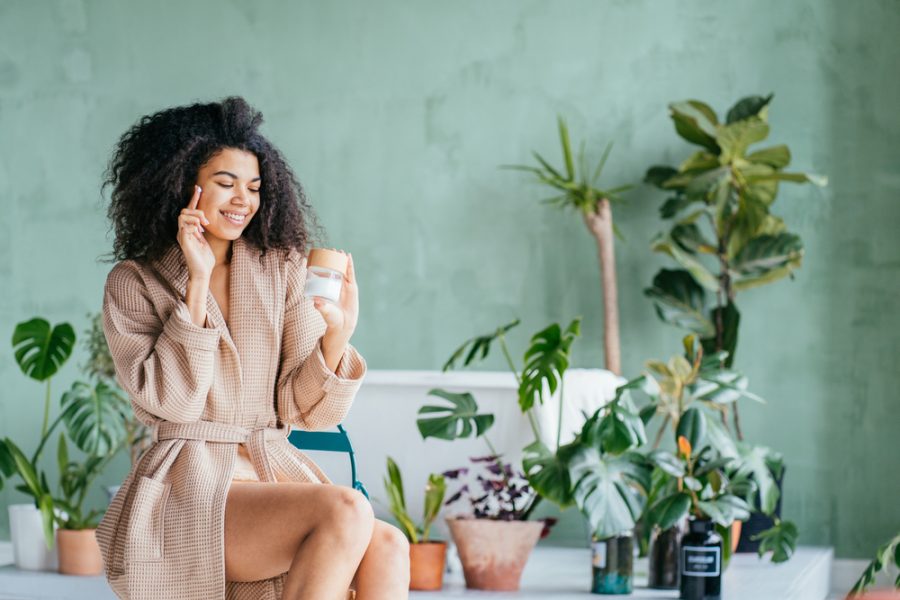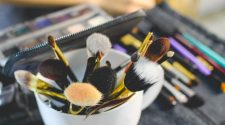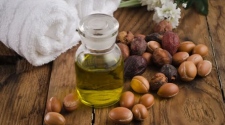Africa is a unique continent typical of all seven continents in the world. Africa has a very diverse culture. It is rich in culture and diversity inheritance, the wealth of natural resources, offering fantastic tourist attractions. Here we are presenting you 14 surprising facts about African skincare history that you might don’t know.
A brief overview on African Skin Care
The talent and spirit of sparkling colors throughout African culture is not wrong. Clothing, body art, jewelry, accessories, and even bright colors of the food market, are examples of company companies that are strong in most of the African tribes.
Jewelry is not new for African or African culture. Skin ornaments such as painting and tattoos, and decoration practices with paint or pigments, have been practiced because of at least 4000 BC. The North Namibian Himba tribe and the Sudanese all depend on the Oker.
Ancient Egyptians use cosmetics to increase their lips and cheeks with red coloring and paint Kohl’s eyes well documented for the upper and lower eyelids made initially of soot.
History of African Skincare
1) Storing fat in Cattle Horn
Shining, shiny, and moisturizing skin is the primary health symbol, and our ancestors achieve this using animal fat, usually from sheep or other animals in their livestock.
2) Making of Lip Plate
The lip plate is a modification of the ancient, beautiful body that is still visible today in several tribes in Africa. The lip plate is made by placing a plate at the bottom of the lip that stretches the lip area. When the plate is comfortable in the area, the larger ones are placed on the lips to stretch further skin. The fabulous lower lip is considered very interesting in this culture.
3) Tattoos and Skin Modification
Body scars are no different from tattoos. Instruments and techniques vary. Different tribes and cultures use these signs for various things. Some signs are explicitly made for aesthetic reasons, while others mark social status or crimes committed by an individual.
4) Use of Black Soap
People residing in Nigeria and Ghana have used black soap for centuries for bathing and to reduce body odor. That, and still used as a shampoo for hair, not only to clean but also to relieve itching and irritating scalp. African black soap is used to reduce oily skin and certain skin conditions, such as acne and eczema.
Women use black soap for skin care during and after pregnancy to keep dry skin, stretch marks, and other skin conditions caused by hormone changes. The soap is also used in infants due to its purity and gentleness on sensitive skin.
5) Use of Argan Oil
Argan oil is always present in African skincare history because its presence has been found since 600 BC. It is a common skincare material used by Tribe Berber in the North African region.
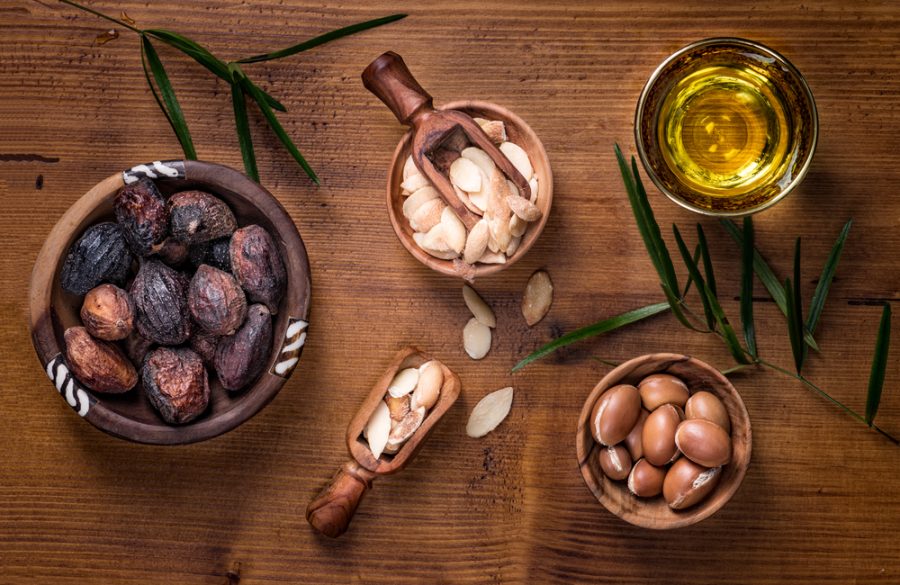
People use almost every part of the Argan tree because forests and fruits are used for fires and food, the kernel is used to extract oil, and butter is used with slices of bread. Oil is used for moisturizers, natural beauty tools, and skincare.
6) History of Marula Oils
You can use Marula oil to have natural skin, which is soft and hydrated. Marula oil is used to treat stretch marks, anti-aging, and sparkling and healthy hair. Some skin care products also use this oil for spikes and lip moisturizers.
There is an interesting saying in the African tribe related to the marula tree that if you want a baby boy, you have to drink tea made from the fruits of male marula trees, and if you want a girl, drink tea from female tree fruit.
7) Origin of Shea Butter
This is one of the most popular materials of the history of African skincare. Shea jam trees grow in more than 21 countries in Africa, which is an extraordinary fact in itself.
It had a butter layer in it, and shea butter got its fame in ancient Egypt when Cleopatra used it on a large scale. It is famous for its efficacy in medicine, such as a soothing skin rash, stretch mark, acne, preventing dryness and sun protection. Shea Butter has many hair benefits too. You can say that it is all-round products that you need for skincare and your hair.
8) Natural Skincare with Maffura Tree
African tribal women generally use this unique tree from the history of African skincare. The seed oil is rich in fatty acids and is suitable for maintaining and revitalizing hair and skin. You can read about the property and extraction processes of it.
This tree’s historical roots come from the sub-Saharan African region. However, it was found broadly in other parts of Africa, where high rainfall and rich soil can be found. The fruits of three unique lobes remove butter and oil when pressed.
9) Sunblock and Lip Balm with Natural Oil
Mongongo oil is part of African skincare history as it has been used for a long time. Oil protects the skin from extreme solar heat. It has plenty of essential elements and is also used for hair care. At present, it is used in several beauty products such as lotions, sun protection products, lip balm, etc. Oil extracted from the kernel is found in tree beans.
10) Use of Ghassoul Clay
This Clay has been used since the 8th century by North African women. It is a natural mineral clay extracted by the Atlas mountain, which is in Morocco. This Clay is rich in potassium, sodium, iron, and silica and has been used for body care, skin, and hair.
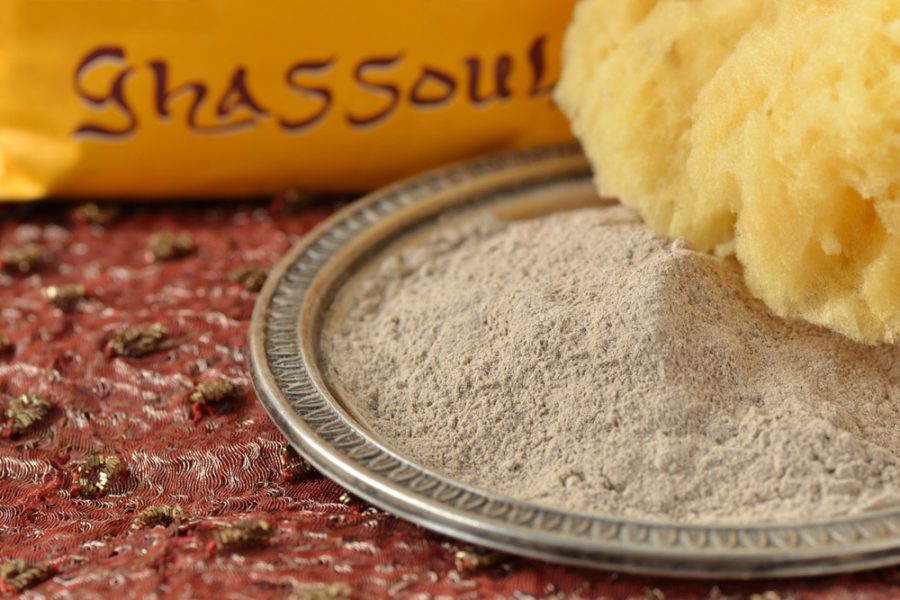
When used as a face mask, it significantly produces softening skin, removes dead cells, and tightens the pores. Previously it was popularly used in Morocco Hammam and Turkish baths. It was not found anywhere else, but the Chain of Mount Atlas made it a rare and unique product from the history of African skincare.
11) Castor Oil: Useful or Dangerous?
The seeds contain toxins that can be deadly if they are consumed raw. It is another popular oil originating from the tropical African region. Then with increasing trade, cultivation began in various areas such as India, China, and Brazil. The castor plant is planted explicitly on a large scale for medical and commercial purposes.
We use it widely used for hair and skin care because it provides deep moisturizers and provides natural light to the skin. People in ancient times also use to light night lamps.
12) Baobab Oil Tree: Is it a Tree or Natural Tap?
Baobab is known as the tree of life because it has many useful properties. It behaves like a delicious giant with up to 80 percent of the stem made of water. Without interesting saying this tree, “San Bushman” used to depend on trees as a valuable water source when the rain falls and the rivers dry.
A single tree can accommodate up to 1,189 useful fluid gallons, while the old Baobab Hampa Center also provides proper shelter. Baobab oil is rich in texture with a mild aroma and is one of the materials from African skincare history used in its raw form. It has calming and can provide inside moisturizers, anti-aging, and vitamins such as A, D, E, and F.
13) Yangu Oil
This is known for its practical sun protection feature. South Africa is a very hot continent, and old-fashioned people put a lot of effort into finding natural solutions for their skin and food protection. At present, the oil is used in many skincare products such as oil, lips, and soap.
14) Alum Stone
Alum powder is made of Alum, which has been widely used since before being recorded history. Even though it is the length of time that has been used, it is not a culinary element to a relatively new time. Alim is a Short name for potassium aluminum sulfate. It is known as an ancient antiseptic, and the initial application of Alum is expected as a fixative to dye textile.

At present, it is highly used by men as an aftershave because it has healing properties. It is also useful in the skin color that relieves and whitens. This eliminates excess oil and helps remove acne scars.
Conclusion
Women always practice skincare throughout the world. Even before the evolution of cosmetics, skincare has found its existence along with humans. Skincare is essential because no one can beat the beauty of shining skin.
The history of African skincare is rich in plants and herbs found locally because Africa has been blessed with natural wonders, and some plants are not found elsewhere on this earth but in Africa.
African skincare history shows that women have experimented and found natural ingredients in the past, which is very useful that their use has been continued through generations.


